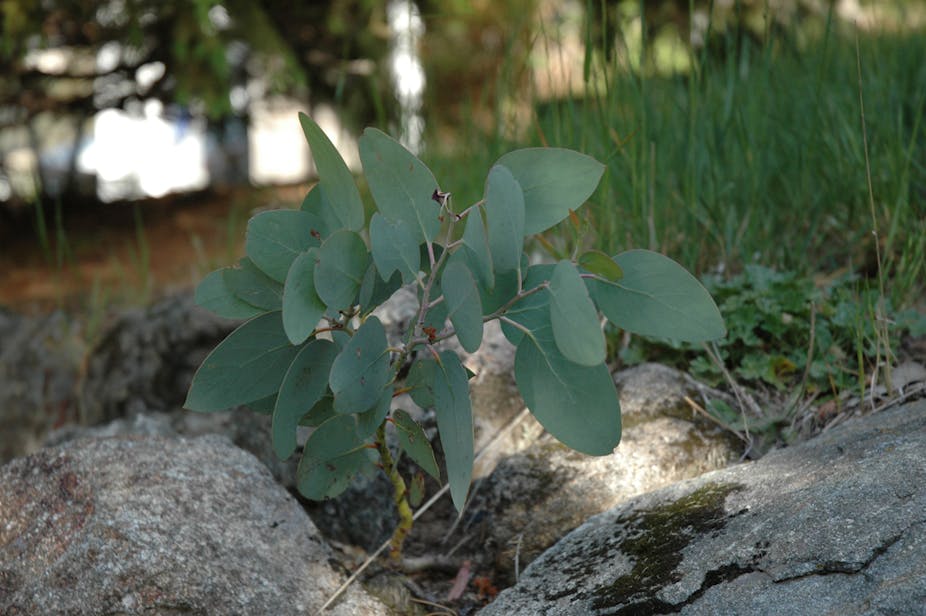Carbon farming - or biosequestration - seems to be the only climate change mitigation measure that both sides of politics can agree on. But its effectiveness may be sorely overstated.
Biosequestration - maintaining or increasing carbon stocks in soils and trees - has already played a significant role in Australia meeting its target under the Kyoto Protocol.
Federal Government and Opposition policies both include biosequestration measures and draft legislation for a Carbon Farming Initiative, which covers a limited set of biosequestration options, is now before the Federal Parliament.
Getting the carbon out of the atmosphere
Methods for increasing carbon in Australia’s soil and trees include reducing land clearing, planting trees on cleared land and increasing carbon stocks in soils through changing cropping or grazing land practices.
The Garnaut Review, CSIRO, Climateworks, Beyond Zero Emissions and the Wentworth Group of Concerned Scientists have recently estimated how much Australia might reduce emissions through changing land management.
The Carbon Farming Initiative is a step in the right direction for climate change and land management policy. However, there are some key issues to resolve before biosequestration can reduce emissions.
Cheap and easy? Not so much
How much carbon dioxide can we really sequester in forest, cropland and grazing land? Some reports suggest we could offset up to 1.7 times Australia’s total greenhouse gas emissions each year, if all options were realised.
While there are qualifications in these reports about achieving this potential, commentators and policy makers don’t seem to have fully recognised these limitations.
The result: many think biosequestration is a cheap and easy way out. There is a perception it will swamp the need for action to reduce emissions in the power, transport or mining sectors.
The reality is that changing land management to achieve this potential will be neither cheap, nor easy, and will be severely constrained by operational factors.
Before we can undertake large-scale revegetation we need enough land, enough seedlings, and enough labour to plant and manage these areas.
It cost more than $4 billion to establish one million hectares of new forest plantations under Managed Investment Schemes between 1995 to 2009. At its peak, the planting rate was 140,000 hectares per year.
At that rate, it would take 980 years to plant the 147 million hectares that CSIRO recently suggested was potentially available for carbon forestry.
Estimates by Climateworks Australia are closer to what might be operationally feasible. They propose that forestry and agriculture could offset about 17% of our national emissions by 2020 at a carbon price of $25 per tonne. Forestry could deliver about two-thirds of this amount.
This will still require a heroic level of commercial planting and environmental revegetation: around 600,000 hectares per year, on marginal farmland and in smaller blocks on productive farms. And that’s assuming a lot of farmers will want to change their land use on a large scale.
Biosequestration is likely to only be part of the picture for greenhouse gas emissions reduction in the short term. Building capacity and rural commmunity support to take advantage of this potential will take some time.
More to mitigation than carbon dioxide
Biosequestration may lead to emissions of other greenhouse gases, such as methane and nitrous oxide.
Carbon dioxide is the currency of biosequestration, but under some circumstances, a change in land management to promote carbon accumulation can have perverse outcomes.
For example, adding nitrogen fertiliser to increase production of pastures, crops or trees (which in time is converted to soil carbon) will result in emissions of nitrous oxide. This gas has a global warming potential 300 times that of carbon dioxide.
Rehabilitating degraded croplands by turning them into pasture would normally include adding some cows or sheep. These emit methane, and methane is over 20 times as potent a greenhouse gas as carbon dioxide.
Will it work? We need more research to tell
While our capacity to measure and monitor carbon stock changes in trees and soil has increased, doing this cost-effectively and accurately requires considerable investment in new research.
Advances in satellite-based remote sensing mean we can now monitor changes in tree cover. The National Carbon Accounting System has considerably improved our ability to estimate changes in carbon stocks from converting pasture or cropland to trees.
However, we still have only limited understanding of how to significantly increase carbon in soil. We need to know more about the effect of activities like minimum till, residue management, pasture management and crop rotations in the wide range of different climate and soil types we have across Australia.
Australia’s climate and soils are very different to those in North America and Europe and we cannot simply apply the results of research from overseas to our local situations.
We need more research to better understand soil processes and to develop methods for efficient monitoring and reporting. Farmers need this information if they’re to take part in carbon farming.
We also need research to improve understanding, measurement and monitoring of the carbon changes in woody revegetation, particularly in regions where there has been little experience with growing tree crops.
Biosequestration through better land management can be a significant way to reduce greenhouse gas emissions. However, in encouraging these activities we must also remember that land use changes to forestry and pasture cannot be reversed without significant carbon costs should we decide that more land is needed for food production.
It can also generate benefits for rural Australia from improved farm productivity, increased wood supply, biodiversity conservation and erosion protection.
However, the amount of carbon we ‘sequester’ in the landscape is ultimately limited. So it cannot be the only, or even the primary, pathway for transformation to a low carbon economy. It is a short to medium term measure to assist transition to a new economy.
But without increased investment in research to support measurement and monitoring, and without transparent and efficient carbon market arrangements, carbon farming is bound to disappoint our high hopes.

